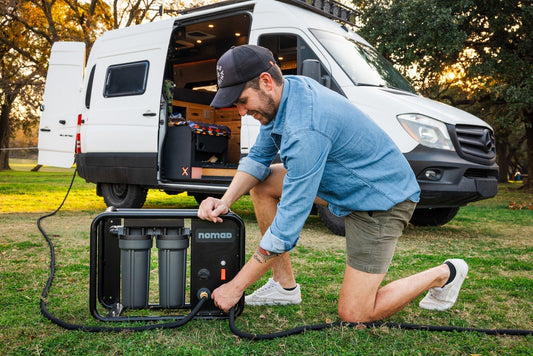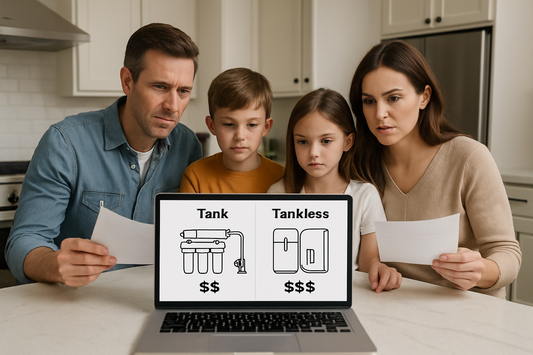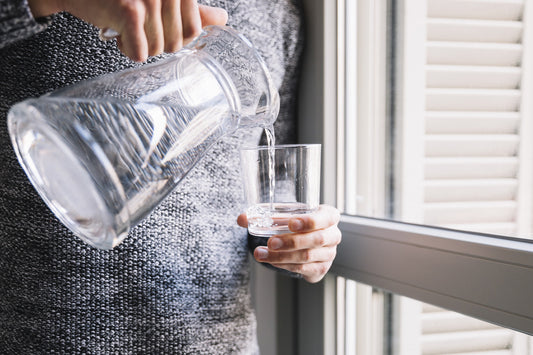Your refrigerator's water filter is working around the clock to deliver clean, great-tasting water to your family. Yet many homeowners treat it as an afterthought until the water starts tasting off or the filter light blinks red. Smart maintenance keeps your refrigerator water filter performing at peak efficiency while protecting your family's health and your wallet.
What Makes Refrigerator Water Filters Essential
A water filter on refrigerator units serves as your first line of defense against chlorine, sediment, and potential contaminants that affect both taste and safety. Unlike countertop filters that require constant refilling, your fridge filter works continuously, processing water every time you fill a glass or grab ice.
Modern refrigerator filters use activated carbon technology combined with mechanical filtration to remove chlorine taste, reduce lead, and capture particles as small as 0.5 microns. This dual-action approach ensures the water dispensed from your fridge meets or exceeds bottled water quality standards.
Choosing the Right Water Filter for Refrigerator Systems
Understanding Filter Compatibility
Not all filters fit all refrigerators. Each brand typically requires specific filter models designed for their water system specifications. The wrong filter won't seal properly, leading to bypass issues where unfiltered water mixes with filtered water.
Check your refrigerator's model number and consult the owner's manual or manufacturer's website for compatible filter part numbers. Popular brands like Whirlpool, GE, Samsung, and LG each have distinct filter designs that aren't interchangeable.
Filter Capacity and Performance Ratings
Most refrigerator water filters process 200-300 gallons before requiring replacement, roughly every 6 months for average households. However, usage patterns matter more than time. A family of six will exhaust filter capacity faster than a couple who rarely uses the dispenser.
Look for filters certified by NSF International (NSF/ANSI Standards 42 and 53) for chlorine reduction and contaminant removal verification. These certifications ensure the filter actually performs as advertised.

Installation Made Simple
Step-by-Step Filter Replacement
Most modern refrigerators feature tool-free filter replacement designed for homeowners. Here's the universal process:
Before Installation:
- Locate your filter compartment (typically inside the fridge or in the base grille)
- Have a towel ready to catch any residual water
- Note the direction arrows on your old filter
Installation Process:
- Turn the old filter counterclockwise and pull straight out
- Remove packaging from the new filter (but keep protective caps until insertion)
- Align the new filter with guide marks and push firmly into place
- Turn clockwise until it locks (usually a quarter turn)
- Run 2-3 gallons of water through the system to flush carbon particles
Post-Installation Check:
- Reset your filter indicator light according to your manual
- Check for proper sealing with no water bypass
- Taste test after the initial flush
Maintenance That Extends Filter Life
Water Quality Monitoring
Your water filter for refrigerator systems work harder in areas with poor source water quality. Install a simple TDS (Total Dissolved Solids) meter to monitor your filtered water's quality. Rising TDS numbers indicate your filter is reaching capacity.
Watch for these performance decline indicators:
- Slower dispensing speed
- Chlorine or metallic taste returning
- Cloudy or discolored water
- Ice cubes with off-flavors
Maximizing Filter Efficiency
Simple habits can significantly extend your filter's effective lifespan:
Regular System Maintenance:
- Clean the exterior dispenser nozzle monthly with warm soapy water
- Wipe down the filter housing during regular fridge cleaning
- Check door seals to prevent temperature fluctuations that stress the system
Usage Optimization:
- Run water for 5-10 seconds if the dispenser hasn't been used for several hours
- Avoid dispensing extremely hot items near the water system
- Replace filters before the 6-month mark if you notice performance changes

Image by freepik
When to Replace Your Refrigerator Water Filter
Clear Warning Signs
Don't wait for the filter light to remind you. These signs indicate immediate replacement needs:
Taste and Odor Changes:
- Return of chlorine or chemical tastes
- Musty or stale water odors
- Metallic aftertaste in ice or water
Physical Performance Issues:
- Noticeably slower water flow
- Inconsistent water temperature
- Filter housing leaks or loose connections
Visual Indicators:
- Filter light activation (if equipped)
- Visible sediment in ice or water
- Discoloration in the filter housing
Cost-Effective Replacement Strategy
Quality replacement refrigerator water filters cost $20-50 but provide better value than premium brands charging $80+ for identical performance. Generic filters certified to the same NSF standards deliver equivalent filtration at significant savings.
Consider buying filters in bulk during sales periods. Properly stored filters have 2-3 year shelf lives, making bulk purchasing economically smart for regular users.
Troubleshooting Common Filter Issues
Low Water Pressure Solutions
Reduced flow often indicates filter clogging, but other factors contribute:
- Check if the filter is fully seated and locked
- Verify the water supply line isn't kinked behind the refrigerator
- Confirm the filter housing isn't damaged or warped
If pressure remains low after filter replacement, the issue likely involves internal water lines requiring professional service.
Bypass and Leaking Problems
Water bypassing the filter defeats the entire system purpose. Common causes include:
- Incorrectly installed filters that don't seal properly
- Damaged O-rings or gaskets in the filter housing
- Cross-threaded filter connections during installation
Always hand-tighten filters according to manufacturer specifications. Over-tightening can damage sealing components.

Image by pixel-shot.com
Maximizing Your Investment
Your refrigerator's filtration system represents a significant convenience and health investment. Proper maintenance ensures consistent performance while avoiding costly repairs from neglected systems.
Track your filter replacement dates and water quality changes in a simple log. This data helps optimize replacement timing and can identify potential issues before they become expensive problems. Most importantly, regular maintenance ensures your family enjoys clean, great-tasting water every day.
Frequently Asked Questions
How often should I replace my refrigerator water filter? Replace every 6 months or after 200-300 gallons, whichever comes first. Heavy usage families may need more frequent changes.
Can I use generic filters instead of brand-name ones? Yes, NSF-certified generic filters perform identically to brand-name versions at lower costs. Verify compatibility with your model first.
Why does my water taste funny after installing a new filter? New filters contain carbon particles that create temporary taste issues. Flush 2-3 gallons through the system to resolve this.
What happens if I don't replace my filter regularly? Old filters become breeding grounds for bacteria and may release trapped contaminants back into your water supply.






